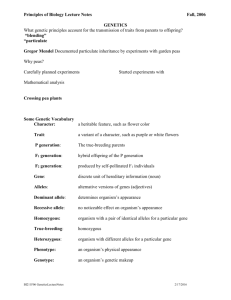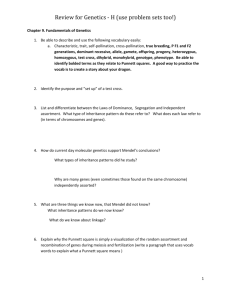Biotechnology
advertisement
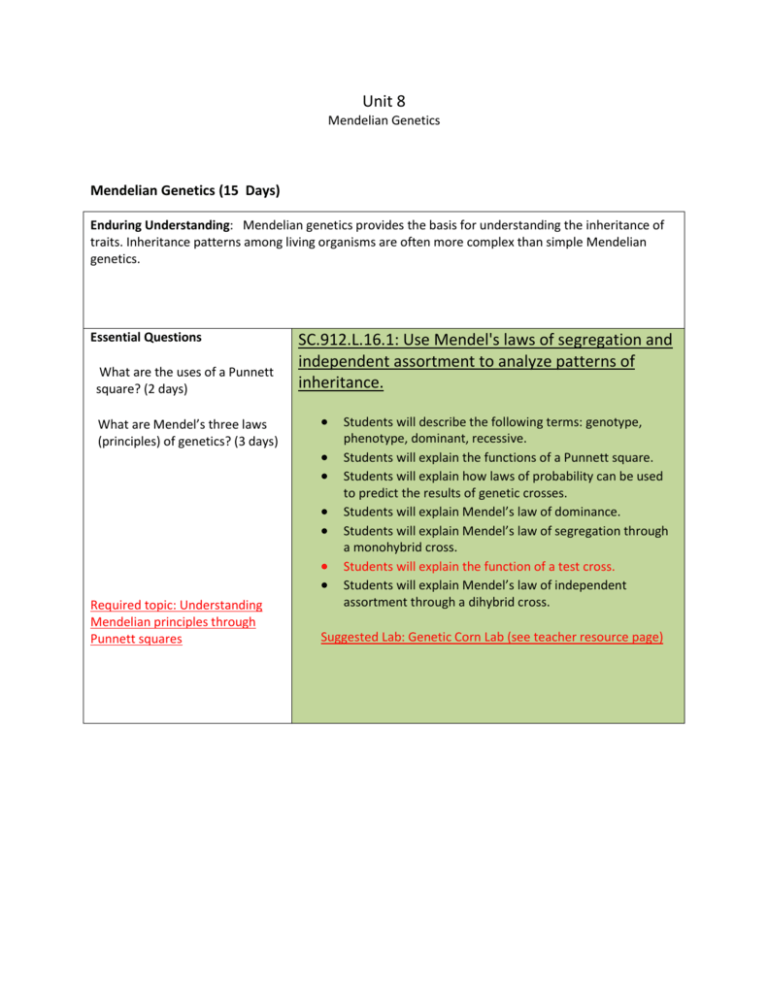
Unit 8 Mendelian Genetics Mendelian Genetics (15 Days) Enduring Understanding: Mendelian genetics provides the basis for understanding the inheritance of traits. Inheritance patterns among living organisms are often more complex than simple Mendelian genetics. Essential Questions What are the uses of a Punnett square? (2 days) What are Mendel’s three laws (principles) of genetics? (3 days) SC.912.L.16.1: Use Mendel's laws of segregation and independent assortment to analyze patterns of inheritance. Required topic: Understanding Mendelian principles through Punnett squares Students will describe the following terms: genotype, phenotype, dominant, recessive. Students will explain the functions of a Punnett square. Students will explain how laws of probability can be used to predict the results of genetic crosses. Students will explain Mendel’s law of dominance. Students will explain Mendel’s law of segregation through a monohybrid cross. Students will explain the function of a test cross. Students will explain Mendel’s law of independent assortment through a dihybrid cross. Suggested Lab: Genetic Corn Lab (see teacher resource page) Essential Questions Do the allele frequencies of certain dominant and recessive traits influence how they are inherited? (1 day) SC.912.L.16.2: Discuss observed inheritance patterns caused by various modes of inheritance, including dominant, recessive, codominant, sex-linked, polygenic, and multiple alleles. How are codominance and incomplete dominance different from simple Mendelian inheritance? (1 day) What are sex-linked traits? (1 day) What is the difference between inheritance involving multiple alleles and polygenic inheritance? (1 day) What is the difference between pleiotropy and epistasis? (1 day) What are the functions of a pedigree chart? (1 day) Students will describe how dominant alleles may not be the most common in a population (polydactylism). Students will explain how some disorders may be due to dominant alleles and how they are inherited. Students will describe the role of carriers in the production of recessive disorders. Students will explain codominance (AB blood type, roan cattle). Students will explain incomplete dominance (snapdragons). Students will explain the inheritance of sex-linked traits (hemophilia, color-blindness) Students will explain how multiple alleles affect inheritance (ABO blood type). Students will describe how polygenic inheritance can result in a continuum of phenotypes (skin color, height). Students will explain how a gene may have multiple phenotypic effects (pleiotropy). Students will explain how one gene may affect the expression of another (epistasis). Students will analyze inheritance patterns through the use of a pedigree chart. 1. What kinds of information can a karyotype provide versus a pedigree chart? (1 day) 2. Explain the importance of pre-natal genetic screening. (1 day) 3. What are the social implications of genetic screening? (2 days) HE.912.C.1.4 Analyze how heredity and family history can impact personal health. Students will differentiate between karyotyping and pedigree analysis Students will explain the importance of pre-natal genetic screenings Students will be able to link diseases to specific heritable traits ◦ Reese Factor, sickle cell anemia, Albinism,cystic fibrosis, tay sach's, etc. Students will be able to discuss the social implications of Genetic screening and the Human Genome Project.

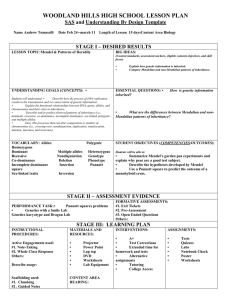

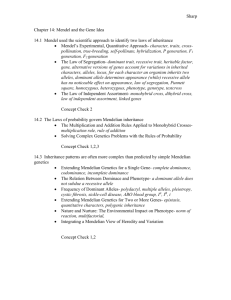
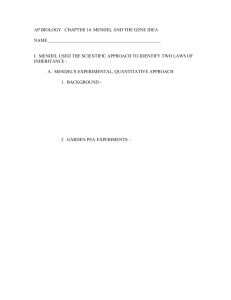
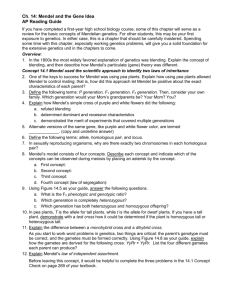
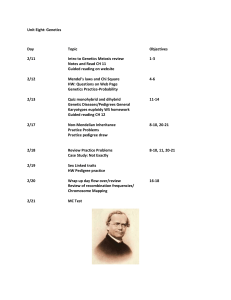
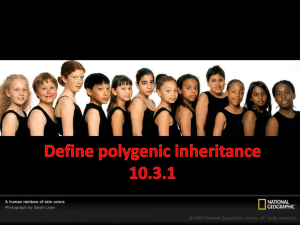
![[11.1,11.2,11.3] COMPLEX INHERITANCE and HUMAN HEREDITY](http://s3.studylib.net/store/data/006715925_1-acaa49140d3a16b1dba9cf6c1a80e789-300x300.png)

